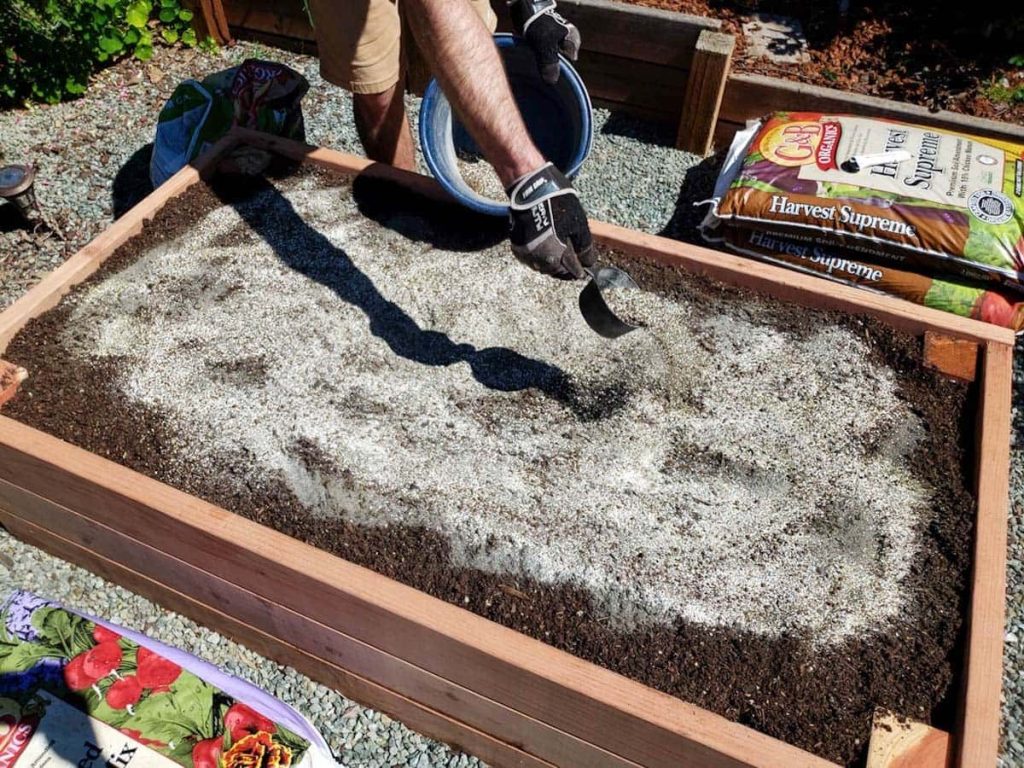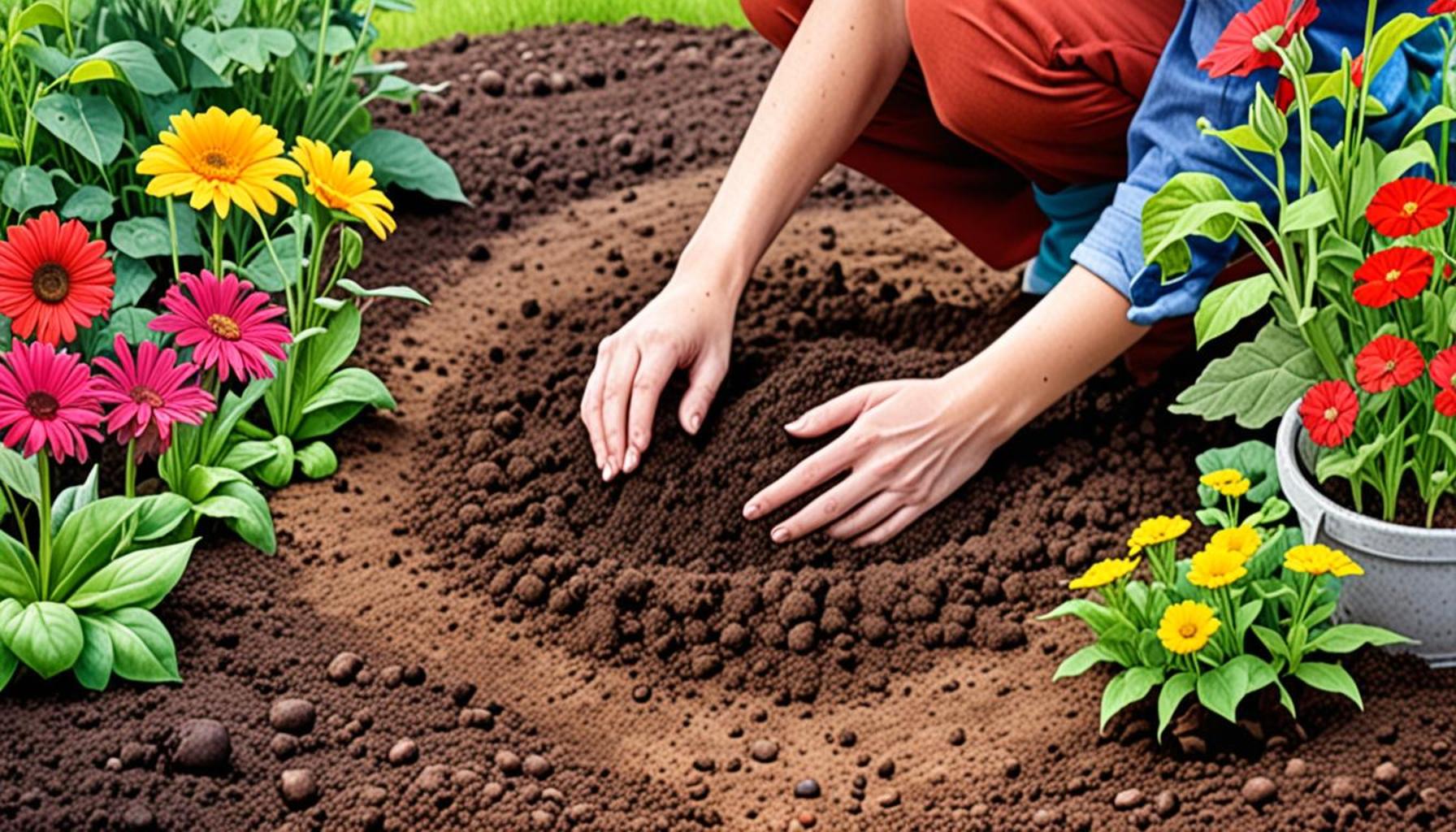Natural Soil Enrichment Methods for Home Gardens

Enhancing Your Soil Naturally
Creating a thriving home garden starts from the ground up. Healthy soil is the foundation that supports vibrant plants and bountiful harvests. Fortunately, there are various natural soil enrichment methods that can boost your garden’s health without relying on synthetic chemicals.
These techniques not only improve soil structure but also enhance fertility and promote beneficial microbial activity. Here are some effective methods to consider:
- Composting: Recycling kitchen scraps and yard waste into nutrient-rich compost. Composting is an excellent way to reduce food waste, and it transforms organic matter like vegetable peels, grass clippings, and autumn leaves into a dark, crumbly material that enriches your soil. By incorporating compost into your garden, you provide essential nutrients such as nitrogen, phosphorus, and potassium, which are vital for plant growth.
- Cover Crops: Planting crops like clover or rye during the off-season to improve soil quality. Cover crops not only prevent soil erosion but also fix nitrogen in the soil, making it more fertile. When these crops are tilled back into the soil, they decompose and contribute organic matter, helping to create a healthier soil structure influenced by improved aeration and increased moisture retention.
- Mulching: Using organic materials like straw or wood chips to retain moisture and suppress weeds. A thick layer of mulch can significantly lower soil temperature, improve moisture retention during dry spells, and prevent the germination of unwanted weeds. As it breaks down over time, mulch also adds organic matter to the soil, enhancing its fertility.
- Crop Rotation: Alternating plants to prevent nutrient depletion and reduce pests. By rotating crops, you disrupt the life cycles of pests and pathogens that may become established in the soil. For example, planting legumes such as beans or peas one season can help refill nitrogen levels in the soil before growing nitrogen-loving plants like corn the following season.
- Green Manures: Planting specific crops to enrich soil before tilling them back. Green manure crops like buckwheat or vetch are grown primarily to enhance soil fertility. By turning them into the soil before they mature, they help increase organic matter and nutrient levels while also preventing soil erosion.
By incorporating these strategies, you can effectively replenish your soil’s nutrients and create a sustainable gardening environment. Not only will your plants flourish, but you’ll also contribute positively to the ecosystem. Additionally, embracing these natural practices can reduce reliance on chemical fertilizers, which can be detrimental to local waterways and wildlife.
Undertaking these methods not only nurtures plants but also fosters a more sustainable lifestyle, aligning with the growing trend of eco-friendly gardening. Engaging in these practices helps you connect with nature and understand the delicate balance of your garden’s ecosystem. Let’s delve deeper into each method, considering specific techniques and tools, that can transform your home garden into a lush paradise.
DISCOVER MORE: Click here for essential tips on selecting garden tools

Unveiling the Benefits of Soil Enrichment
To truly grasp the importance of natural soil enrichment methods, it’s essential to consider the myriad benefits they bring to your home garden. By focusing on enriching your soil naturally, you not only create an environment conducive to plant health but also contribute significantly to the sustainability of your garden ecosystem. Here, we will explore the specific advantages these methods offer and how they can be seamlessly integrated into your gardening practices.
Improved Soil Structure
One of the primary benefits of natural enrichment methods is the enhancement of soil structure. Healthy soil consists of a well-aggregated mix of particles that allow for adequate air and water flow. Techniques like composting and green manures help create this ideal structure. As organic matter decomposes, it forms aggregates that improve drainage and aeration, resulting in a balanced ecosystem that supports healthy root systems. Well-structured soil retains moisture and makes nutrients more available to plants, fostering abundant growth.
Nutrient Richness
Natural soil enrichment methods significantly boost the nutrient content of your garden soil. For example, when utilizing cover crops like clover, these plants not only protect the soil but also fix nitrogen—a crucial nutrient that promotes lush foliage and flowering. Once these crops are turned back into the soil, they release nutrients that foster an enriching environment for future plantings. Similarly, the use of compost provides a balanced nutrient profile without the risk of chemical runoff, ensuring a healthier garden ecosystem that benefits plants, soil organisms, and local wildlife.
Microbial Activity
Another compelling reason to embrace natural soil enrichment is the enhancement of beneficial microbial activity. Healthy soil teems with microbes that play a critical role in breaking down organic matter, cycling nutrients, and aiding in plant health. Methods like cropping rotation and the incorporation of organic materials not only promote diverse microbial populations but also foster a robust soil food web. As you cultivate these microorganisms, they facilitate nutrient absorption for your plants and help build resilience against pests and diseases.
Sustainability and Environmental Benefits
In addition to enriching your soil, adopting natural methods contributes to the sustainability of your garden and the environment at large. By reducing reliance on synthetic fertilizers and chemical pesticides, you minimize the risk of chemical leaching into local waterways, which can lead to harmful algal blooms and aquatic life disruption. Furthermore, practicing mulching not only enriches the soil but also lowers garden maintenance by suppressing weeds and conserving soil moisture, thereby creating a win-win scenario for both your garden and the planet.
By understanding these vital benefits, you can better appreciate the significance of natural soil enrichment methods. As we proceed further, we will offer practical insights and specific techniques that will help you implement these strategies effectively in your home garden. Whether you’re a seasoned gardener or just starting, embracing these enriching practices will lead you to a flourishing garden that thrives sustainably.
| Enrichment Method | Advantages |
|---|---|
| Composting | Returns nutrients to the soil and improves soil structure. |
| Green Manures | Enhances soil fertility and suppresses weeds when grown between crops. |
| Mulching | Helps retain moisture and suppress weed growth, enriching soil as it decomposes. |
| Worm Castings | Provides beneficial microbes and nutrients for healthier plants. |
Natural soil enrichment methods are crucial for enhancing the health and productivity of home gardens. Composting, for instance, is an excellent practice that not only recycles kitchen scraps but also creates a nutrient-rich amendment that drastically improves soil structure. Utilizing green manures like clover or vetch can also significantly enhance soil fertility while actively helping to suppress weeds. Another effective method is mulching, which not only retains soil moisture but adds organic matter over time, invigorating the soil.Moreover, incorporating worm castings into your garden enhances the microbial activity in the soil, leading to healthier plants and increased yields. Each of these methods not only promotes sustainability but also empowers home gardeners to take charge of their soil health. Exploring these natural techniques can lead to a thriving garden that benefits both the environment and the gardener.
DIVE DEEPER: Click here to grow your herbal knowledge
Practical Techniques for Natural Soil Enrichment
Arming yourself with knowledge about natural soil enrichment methods is only half the battle; implementing practical techniques ensures your home garden flourishes. Here, we delve into specific strategies that can bolster your soil health and productivity, making it suitable for a variety of plants and garden styles.
Utilizing Compost
Composting remains one of the most effective natural soil enrichment methods. By converting kitchen scraps and yard waste into nutrient-rich “black gold,” you can not only minimize waste but also significantly improve your soil’s composition. When creating a compost pile, aim for a balanced mix of green materials (like grass clippings and vegetable peels) high in nitrogen and brown materials (such as dried leaves and cardboard) rich in carbon. Once the pile reaches a suitable temperature, the decomposition process will break down these materials, delivering an oxidative boost that will enhance soil fertility.
Incorporating Organic Mulches
Another effective method for soil enrichment is the use of organic mulches. Materials like straw, wood chips, and shredded leaves not only suppress weeds but also enrich the soil as they break down over time. Applying a thick layer of mulch (about 2-3 inches) around your plants can also help regulate soil temperature and retain moisture, creating a stable environment for root growth. This practice promotes soil biodiversity and encourages the activity of beneficial earthworms and microbes that further enrich the soil.
Practicing Crop Rotation
Crop rotation is a potent practice, particularly beneficial for maintaining soil fertility in vegetable gardens. By alternating the types of crops planted in specific areas of the garden from season to season, the soil’s nutrient balance can be preserved. For instance, planting legumes like peas or beans one season can restore nitrogen levels, while following with heavy feeders like tomatoes or corn can optimize soil health. This practice can help reduce the incidence of pests and diseases, which tend to build up in soil when the same crops are grown consistently.
Integrating Biochar
Though it may sound advanced, biochar is gaining popularity among home gardeners for its soil enrichment properties. This charcoal-like material is created by heating organic matter (such as wood or agricultural waste) in a low-oxygen environment. When added to your garden soil, biochar can enhance nutrient retention, improve soil structure, and foster beneficial microbial life. It’s especially effective in sandy or acidic soils, increasing their capacity to hold moisture and nutrients, which is essential for healthy plant growth.
Engaging in Green Manuring
Green manuring is a practice where specific cover crops are grown to be tilled back into the soil before they reach maturity. Examples of effective green manure crops include buckwheat and vetch. These plants provide a substantial amount of organic matter to the soil, improve its structure, and add nutrients as they decompose. Moreover, their roots help prevent soil erosion, making them a multifunctional ally for your garden ecosystem.
Embracing these techniques will not only enrich your garden soil but also create a harmonious balance within your garden’s environment. As you explore these methods further, consider experimenting with combinations that suit your specific gardening goals. The investment of time and effort in nurturing your soil will undoubtedly pay off in vibrant, healthy plants and a thriving garden ecosystem.
DIVE DEEPER: Click here to discover the best succulents for beginners
Exploring the Benefits of Natural Soil Enrichment
Natural soil enrichment methods are not merely practices for growing a successful home garden; they are integral to fostering a sustainable environment. Techniques like composting, using organic mulches, implementing crop rotation, incorporating biochar, and engaging in green manuring each bring a multitude of advantages that enhance not only the soil quality but also the surrounding ecosystem.
Composting, for instance, transforms kitchen scraps and yard waste into nutrient-rich organic matter. This practice not only reduces landfill waste but also enriches the soil with vital nutrients such as nitrogen, phosphorus, and potassium, which are essential for plant growth. By engaging in composting, gardeners add life to their soil, enhancing microbial activity that supports strong plant roots.
Similarly, organic mulches—like shredded leaves, straw, or wood chips—serve dual purposes. They help retain soil moisture and regulate temperature while gradually breaking down to release nutrients back into the soil. The benefits of these mulches become apparent as plants thrive, free from the stress of fluctuating temperatures and competing weeds.
Another effective technique is crop rotation. This approach involves alternating the types of crops grown in specific areas of your garden each season. It prevents nutrient depletion associated with growing the same plants repeatedly and reduces the likelihood of pest and disease buildup in the soil. For example, rotating between legumes, which fix nitrogen, and root vegetables could lead to improved crop yields over time.
By adding biochar, a type of charcoal produced from plant matter, to the soil, gardeners can enhance its ability to retain nutrients and improve aeration. This method not only sequesters carbon, contributing to climate change mitigation, but creates an environment where beneficial microorganisms can thrive.
Lastly, green manuring involves growing cover crops specifically to be turned back into the soil. These crops not only protect against erosion during off-seasons but also contribute organic matter upon decomposition, enriching the soil and promoting soil structure stability.
As you embark on your journey toward healthier soil, remember that gardening is as much about observation and adaptation as it is about the methods employed. Tailoring your strategies based on the specific needs of your plants and the local climate can lead to remarkable outcomes. As you immerse yourself in these natural soil enrichment methods, consider documenting your practices and results. This reflection might unveil innovative solutions that cater to your unique garden setup.
The significant investment of time and effort in these practices will ultimately reward you with flourishing plants, vibrant flowers, and ample harvests. As your soil thrives, you contribute to a healthier environment by minimizing waste and promoting biodiversity. So, dig in, explore these exciting techniques, and witness your home garden transform into a lush sanctuary that yields both beauty and bounty.



